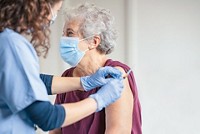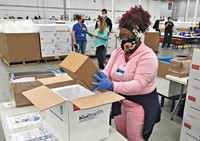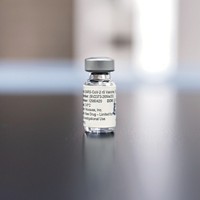Advertisement
Grab your lab coat. Let's get started
Welcome!
Welcome!
Create an account below to get 6 C&EN articles per month, receive newsletters and more - all free.
It seems this is your first time logging in online. Please enter the following information to continue.
As an ACS member you automatically get access to this site. All we need is few more details to create your reading experience.
Not you? Sign in with a different account.
Not you? Sign in with a different account.
ERROR 1
ERROR 1
ERROR 2
ERROR 2
ERROR 2
ERROR 2
ERROR 2
Password and Confirm password must match.
If you have an ACS member number, please enter it here so we can link this account to your membership. (optional)
ERROR 2
ACS values your privacy. By submitting your information, you are gaining access to C&EN and subscribing to our weekly newsletter. We use the information you provide to make your reading experience better, and we will never sell your data to third party members.
Support nonprofit science journalism
C&EN has made this story and all of its coverage of the coronavirus epidemic freely available during the outbreak to keep the public informed. To support us:
Donate Join Subscribe
Vaccines
Covid-19
Adenoviral vector vaccine data both promising and perplexing
Preliminary results from AstraZeneca and Oxford’s Phase 3 trial of their COVID-19 vaccine suggest a smaller dose is better than a full dose
by Ryan Cross
November 24, 2020
| A version of this story appeared in
Volume 98, Issue 46

AstraZeneca and the University of Oxford offered a promising but confusing early look at late-stage data for their experimental adenoviral vector vaccine for COVID-19. The preliminary results suggest the vaccine is only 62% effective when volunteers are given two full doses, but up to 90% efficacious when volunteers received a half dose followed by a full-dose booster.
AstraZeneca’s results are based on an analysis of more than 23,000 people who received either two shots of the experimental COVID-19 vaccine, called AZD1222, or two control shots—either a meningococcal conjugate vaccine or a saline placebo. AZD1222 was only 62% effective at preventing COVID-19 in a group of 8,900 people who got two full doses of the vaccine at least one month apart. Curiously, the vaccine was 90% effective in a group of 2,700 people who first got a half dose of the vaccine followed by a full dose at least one month later. Combining that data, the overall efficacy of the vaccine is on average about 70%. Those results, which were announced via press release, have not been published or peer reviewed.

“A 90% efficacy is impressive, a 62% efficacy is not—although clearly it is better than not having a vaccine at all,” says Hildegund Ertl, a vaccine scientist at the Wistar Institute who is collaborating with the University of Oxford on a rabies vaccine, but was not involved with their COVID-19 vaccine. “We didn’t even know about this virus a year ago and now we are talking about efficacious vaccines, it is unbelievable.”
An independent Data Safety Monitoring Board reviewed the data after 131 people tested positive for COVID-19 two weeks or more after receiving their second shot.
But the information shared by AstraZeneca fell short on several key points. The company did not specify how many of the people who tested positive for COVID-19 were in the placebo group or the number that developed severe disease. It also did not breakdown its results by age or race.
And the firm provided cursory comments about safety, saying only that there were no serious safety events related to the vaccine—despite a hold put on the study in September in the UK and US after a woman developed a rare spinal cord inflammation called transverse myelitis. The company said the condition was not related to the vaccine.
In a brisk letter to investors, SVB Leerink stock analyst Geoffrey Porges and colleagues criticized “the data disclosure as premature and insufficient.” Porges is concerned that AstraZeneca is trying to “embellish” its data by focusing on the 90% efficacy in the smaller group that received the low first dose of the vaccine, while glossing over potential safety concerns. “We believe that this product will never be licensed in the US.”
AZD1222 was originally supposed to be a single shot, but early studies showed the approach induced weak antibody levels. AstraZeneca and Oxford then modified the trials to include a booster shot. According to Reuters, a fraction of participants subsequently were accidentally given a half dose for the first shot.
That a lower initial dose seems more effective than two high doses has perplexed scientists. Immunologists and vaccine experts have come up with several theories to explain the phenomenon.
In a conference call with journalists, Andrew Pollard, director of the Oxford Vaccine Group, which designed AZD1222, speculated that the low dose could be “priming the immune system” to set it up for a better response with the second dose. Oxford professor of vaccinology Sarah Gilbert added that the regimen might better mimic what happens in a real infection. The group says more research will be needed to understand this unexpected result.
Another explanation could come from how the human immune system responds to the adenoviral vectors—the genetically engineered cold viruses used to package and deliver DNA, in this case, DNA that encodes for the SARS-CoV-2 spike protein. The immune system will also make antibodies targeting an adenoviral vector, likely lowering its effectiveness the next time a vaccine is administered, explains Suresh Mittal, a pathobiologist who develops adenoviral vector vaccines at Purdue University. Starting with a low dose of the vector makes it easier for the second, higher dose to overcome antibody immunity against the vector itself, while still boosting immunity to the spike protein, he says.
Ertl concurs, and also believes the timing of the booster shots could explain the difference. The strength of the dose could affect the level of the antibody response to the spike protein, which in turn would influence when you’d want to give a second shot. “Boosting after day 28 may have just been too early,” she says. The two high doses might have worked better if spaced further apart.
Some noted a bright side to the finding. AstraZeneca might be able to make more vaccines since the first dose is smaller, Mittal says. “The side effects are probably going to be lower too,” he adds.
Others cautioned against over-interpreting the data. In fact, several scientists declined to comment on the results until they are published in a peer-reviewed journal. David Dowling, an immunologist in the Precision Vaccine Program at Boston Children’s Hospital writes in an email that the unexpected differences in the two dosing groups underscore “why clinical trials are so important and why we should try to avoid making too many assumptions before fully analyzing the data.”
AstraZeneca and Oxford’s announcement marks the third week in a row that a drug company has come out with positive, albeit preliminary, news from an advanced clinical trial of a COVID-19 vaccine. Earlier this month, the world got a peek at data from the two leading vaccines based on mRNA technology. Moderna’s vaccine, mRNA-1273, was 94.5% effective in a trial of 30,000 people, and Pfizer and BioNTech’s vaccine, BNT162b2, was 95% effective in a trial of 43,500 people.
The mRNA vaccines, like the adenoviral vector vaccines, contain genetic instructions for making the spike protein. Moderna and Pfizer’s vaccines both prompt cells to make an engineered version of the spike called the prefusion stabilized spike protein, which uses two proline mutations to lock the spike in the shape it assumes before infecting cells. AstraZeneca’s vaccine causes our cells to make the natural version of the spike.
“What’s encouraging is that you have three vaccines that are delivering the spike protein, but in somewhat different modes, and they are all delivering similar levels of protection,” says Mark Poznansky, director of the Vaccine and Immunotherapy Center at Massachusetts General Hospital. “The devil is in the detailed reports” that the companies will eventually publish, he adds, noting that it will be important to carefully assess data on safety, side effects, and whether vaccinated people who end up testing positive for COVID-19 have mild, moderate, or severe disease.
That Oxford’s vaccine can be shipped and stored at 2–8 °C “is a big differentiator,” Poznansky says. That makes it easier to fit into existing logistics channels than Moderna and Pfizer’s vaccines, which require subzero temperatures for shipping.
Adenoviral vector vaccines may also be cheaper to manufacture than mRNA vaccines. AstraZeneca estimates the cost at $2.50 per dose, compared to around $15–20 a dose for mRNA vaccines. “Their assertions that their agent will be cheaper, easier to administer, and more transportable are absolutely valid,” says David Curiel, director of the Biologics Therapeutics Center at Washington University School of Medicine in St. Louis. He says that adenoviruses will be easier to produce at scale, too. “It is possible to have football field–sized production suites where you make oodles of these viruses.”
AstraZeneca says it will have 200 million doses of the vaccine by the end of 2020, and the manufacturing capacity for up to 3 billion doses in 2021. The company is preparing its request for an Emergency Use Listing from the World Health Organization to distribute the vaccine in developing countries.
Curiel says that practical advantages of cost and distribution of adenoviral vector vaccines could outweigh the limitations of its efficacy—although he stresses that both regimens of AstraZeneca’s vaccine “showed a level of efficacy that is useful.”
David O’Connor, a pathologist who studies viral infections at University of Wisconsin–Madison agrees. “A vaccine that costs under $3 and can be distributed around the world absolutely has a place where those other vaccines won’t be available,” he says. The World Health Organization and the US Food and Drug Administration require vaccines to be at least 50% effective, and AstraZeneca’s vaccine still clears this bar, he adds. “In a big city in the US, we might be able to be picky about which vaccine works the best, but in most places in the world you won’t have that luxury.”





Join the conversation
Contact the reporter
Submit a Letter to the Editor for publication
Engage with us on Twitter